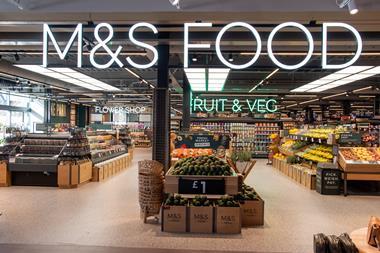Fancy a trip to mayonnaise island? Depending on how you feel about mayo, it may be the makings of a dream or your worst nightmare.
But it’s now a reality, thanks to the latest Hellmann’s collab with cult game Fortnite.
In a bid to “engage with Gen Z gamers across the globe”, the Unilever-owned brand has created an in-game island where players battle it out for virtual Hellmann’s mayonnaise. The aim is to collect as much of the condiment as possible, before earning points by applying it to foods such as French fries, carrots, bread and pasta.
The activity builds on the ‘No space for food waste’ gaming campaign earlier this year, which involved Hellmann’s making donations to FareShare. For João Ricardo Di Creddo Brum, senior marketing manager at Unilever, it’s all about Hellmann’s “pushing boundaries” to connect with its audience. “Gaming is a powerful territory that we’ve been eager to explore,” he sums up.
That statement doesn’t just apply to Hellmann’s. Its parent company Unilever has tripled its spend on gaming since 2021, according to a City AM report earlier this year. It pointed to a team of more than 30 employees within the fmcg giant who are dedicated to reaching the growing gaming community.
A growing community
Pot Noodle – increasingly positioned as the ultimate snack for gamers – has been a key recipient of that attention. The brand has teamed up with Blast and Fnatic – two “legends of the esports industry”, for the uninitiated – and devised a Twitch battle in which gamers compete to slurp their noodles the loudest.
Less obviously relevant brands like Dove are also getting involved. This year, it unveiled a mission to “bring real beauty to the virtual world” by encouraging more realistic portrayals of women and girls in gaming.Unilever has rightly recognised an opportunity for fmcg. The gaming industry is worth $183.9bn (£144.8bn) a year worldwide, according to Warc – putting it ahead of both the music and movie businesses.
And contrary to popular stereotypes, it’s not just the domain of spotty teenage boys. Around 3.4 billion people globally play video games, Warc says, across all demographics. Various sources suggest the gender split is near equal, with 46% of over-55s gaming at least once a week, according to research by Newzoo.
Get in the game
Despite this opportunity, in-game advertising remains a relatively niche element of marketing budgets. Having been touted as the next big thing during the pandemic, gaming still accounts for less than 4% of total US digital ad spend, according to Warc.
That’s despite some impressive initial figures on engagement with gaming ads – as opposed to more passive media such as TV – and return on investment.
Warc points to Roblox as one emerging platform that’s particularly keen to make its case in this area. In April, the virtual universe announced a partnership with ad tech firm PubMatic to help brands reach its 70 million-plus daily active users. Already, we’re seeing early adopters such as make-up brand Elf devise their own games, as mentioned in The Grocer’s Top Products 2024 beauty report.
Experts predict the shift towards in-game advertising will be a gradual one, rather than mass adoption overnight. But interest in the potential reach – and return on investment – is only growing. Crucially, the likes of Unilever may find it is best to be in the game first.














No comments yet